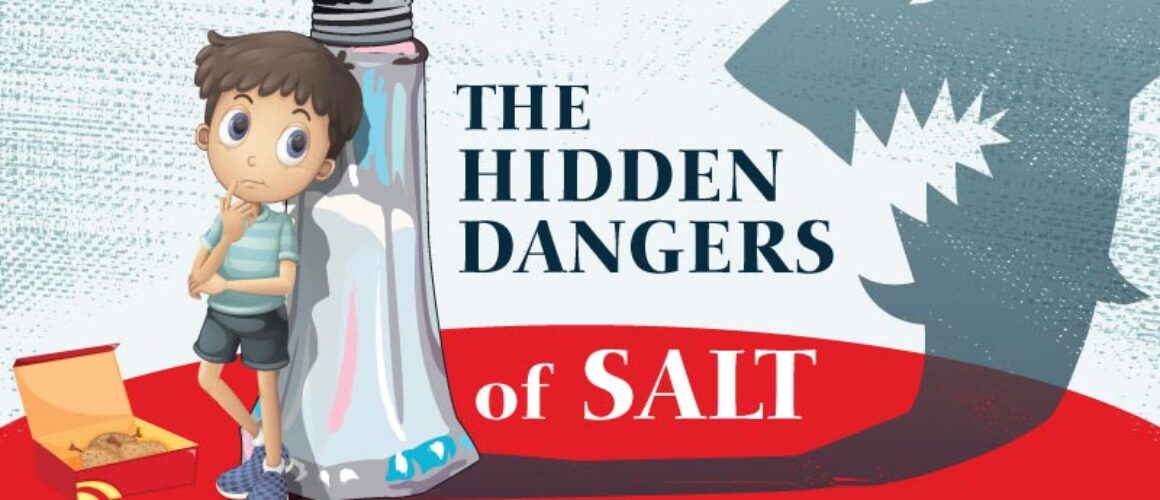The Hidden Dangers of Salt for Kids
 New York City recently announced that it could become the first U.S. city to require warning labels on high-salt dishes at chain restaurants. It’s a new move, taking campaigns to cut down on salt into new territory.
New York City recently announced that it could become the first U.S. city to require warning labels on high-salt dishes at chain restaurants. It’s a new move, taking campaigns to cut down on salt into new territory.
Just as consumers are beginning to wake up to the reality that GMOs have been tucked into our food, has salt become the new bad guy?
Most of us know salt as something that our parents or grandparents worry about. But it turns out that a load of sodium is hitting our kids, too.
New York City’s Department of Health recently proposed that all chain restaurants add a salt-shaker-like symbol on menus next to products that contain more than the recommended daily limit of 2,300 milligrams of sodium, about 1 teaspoon of salt.
Overconsumption of sodium increases the risk of high blood pressure, which can lead to heart attack and stroke. The average American consumes about 3,400 milligrams of sodium each day; only about one in 10 Americans meets the 1 teaspoon guideline.
As we watch the long-term effects of salt play out on our parents’ generation, you have to wonder: how is this impacting our kids? And what can we do about it?
Our kids are getting a mega dose of salt, and it is hidden in places you may not realize.
So should we worry? Is it more hype?
It turns out that pretty much every major health organization is aligned that we eat too much sodium. They are all on the same page (when does that happen?). The CDC, NIH, FDA, WASH, NHS are all suggest getting 2,300 max per day.
So where do our kids land when it comes to that number?
A lot higher, it turns out.
90% of U.S. children eat too much sodium Daily (CDC):
- Age 2-5 Recommended Max 1000-1500 mg/day. Actual: 2,307
- Age 8-12 Rec. Max 1,500-2,200 mg/day. Actual: 3,260
- Age 13-18 Red. Max 1,500-2,300 mg/day. Actual: 3,486
We know that heart disease is the leading cause of death for adults, and excess sodium is a big contributor (CDC), but kids are affected too:
- 1-in-6 kids have high blood pressure
- Longterm health effects of too much sodium:
- Bloating,
- Osteoporosis,
- Brain Function,
- Heart Disease (BMJ, Circulation, Journal of Nutrition, CDC)
- Some reports of kids getting kidney stones
Seriously. Since when did kids get kidney stones? Doctors have linked them to eating too many salty and fatty processed foods and not getting enough water (Chicago Tribune).
So what’s a mom to do?
Know Your Load
The top 5 Hidden Sources of Sodium for Kids is from the Salt in processed/prepared foods:
Pizza, Bread, Cold cuts, Poultry, Sandwiches (CDC)
Some examples:
- Bagels often 20% Daily Value
- Chocolate Milk (yes, it is hiding in chocolate milk) can be 8% of Daily Value
- A serving of Kraft Mac & Cheese 30%
- A single fast-food breakfast sandwich like McDonald’s Bacon, Egg & Cheese biscuit has over 50% Daily Value IN ONE ITEM ALONE! (source: company/brand websites)
Action:
- Teach your kids about sodium. Empower them now so that they are healthy adults later.
- Remember 2,300 mg/day max (which is just 1 teaspoon), though for many kids 1,500 is recommended max.
- Eat at home when you can, where you can control the salt and ingredients that you use.
- Learn this trick: Eat more potassium – yogurt, bananas, baked potatoes, salmon, and avocado are among the many tasty foods with lots of potassium. Potassium helps eliminate excess sodium from your body. Who knew?
- Read labels on packaged foods and when you eat out. They should provide it.
- Share this article and infographic. Knowledge is power.
Source: http://abcnews.go.com/Health/wireStory/apnewsbreak-nyc-officials-high-sodium-warning-menus-31643165
